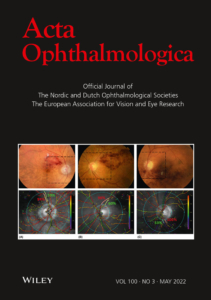Near work, screen time, outdoor time and myopia in schoolchildren in the Sunflower Myopia AEEC Consortium
Authors
Affiliations
1Singapore Eye Research Institute, Singapore, Singapore.
2Comprehensive Health Research Centre, Universidade NOVA de Lisboa, Lisbon, Portugal.
3Department of Ophthalmology and Visual Sciences, The Chinese University of Hong Kong, Hong Kong SAR, Hong Kong.
4Eye Institute of Shandong University of Traditional Chinese Medicine, Jinan, China.
5Ophthalmology and Visual Science Academic Clinical Program, Duke-NUS Medical School, Singapore, Singapore.
6Ophthalmic Epidemiology Research Center, Shahroud University of Medical Sciences, Shahroud, Iran.
7Saw Swee Hock School of Public Health, National University of Singapore and National University Health System, Singapore, Singapore.
8Tongren Eye Care Center, Beijing Tongren Hospital, Capital Medical University, Beijing, China.
9Department of Ophthalmology, The First Affiliated Hospital with Nanjing Medical University, Nanjing, China.
10Department of Ophthalmology, the First Affiliated Hospital of Kunming Medical University, Kunming, China.
11The Affiliated Hospital of Inner Mongolia Medical University, Huhhot, China.
12Affiliated Eye Hospital of Shandong, University of Traditional Chinese Medicine, Jinan, China.
13Pediatric Ophthalmology, Strabismus and Neuro-Ophthalmology Section, Dr. R P Centre for Ophthalmic Sciences, All India Institute of Medical Sciences, New Delhi, India.
14Noor Ophthalmology Research Center, Noor Eye Hospital, Tehran, Iran.
15Department of Ophthalmology, Yong Loo Lin School of Medicine, National University of Singapore, Singapore, Singapore.
16Singapore National Eye Centre, Singapore, Singapore.
17School of Public Health, Medical College of Soochow University, Suzhou, China.
18Eye Hospital, School of Ophthalmology and Optometry, Wenzhou Medical University, Wenzhou, China.
19Department of Epidemiology and Biostatistics, School of Public Health, Tehran University of Medical Sciences, Tehran, Iran.
20Department of Ophthalmology, Medical Faculty Mannheim, University of Heidelberg, Mannheim, Germany.
Abstract
Purpose: To examine the association between near work, screen time including TV and outdoor time with myopia in children from the Sunflower Myopia Asian Eye Epidemiology Consortium (AEEC).
Methods: We analysed AEEC cross-sectional data (12 241 children) on risk factors (near work, screen time including TV and outdoor time) and myopia of six population-based studies (China, Hong Kong and Singapore). Cycloplegic refraction and axial length (AL) measurements were included. Risk factors were determined using questionnaires. Data were pooled from each study, and multivariable regression analysis was performed to evaluate the associations between risks factors and myopia, spherical equivalent (SE) and AL.
Results: Among the included children, 52.1% were boys, 98.1% were Chinese and 69.7% lived in urban areas. Mean±standard deviation (SD) for age was 8.8 ± 2.9 years, for SE was -0.14 ± 1.8 D and for AL was 23.3 ± 1.1 mm. Myopia prevalence was 30.6%. In multivariate analysis, more reading and writing (OR = 1.17; 95% CI, 1.11-1.24), more total near work (OR = 1.05; 95% CI, 1.02-1.09) and less outdoor time (OR = 0.82, 95% CI, 0.75-0.88) were associated with myopia (p’s < 0.05). These factors were similarly associated with SE and AL (p’s < 0.05), except for total near work and AL (p = 0.15). Screen time including TV was not significantly associated with myopia (p = 0.49), SE (p = 0.49) or AL (p = 0.83).
Conclusion: In this study, increased reading and writing and decreased outdoor time were associated with myopia. Screen time may be a surrogate factor of near work or outdoor time, but further research is needed to assess its role as an independent risk factor for myopia.
Keywords: children; myopia; near work; outdoor time; reading and writing; screen time including TV.

